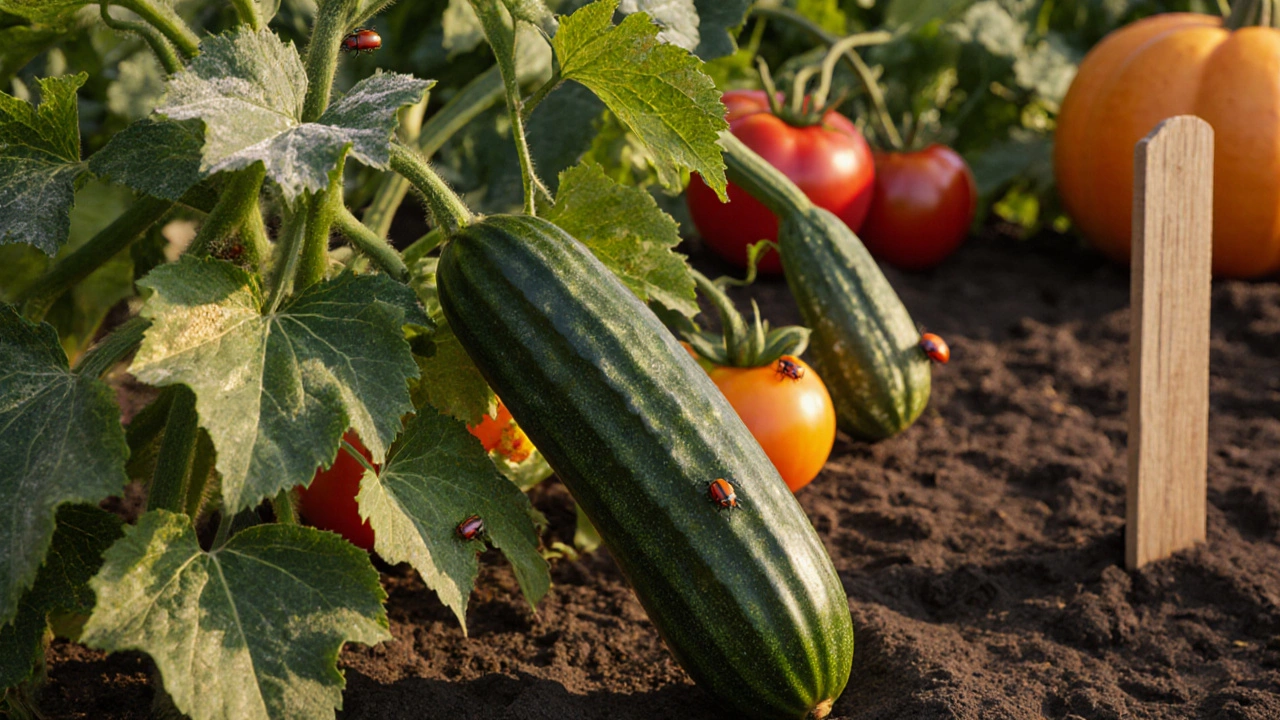Cucumber Companion Planting: Boost Yield and Fight Pests
When planning cucumber companion planting, the practice of growing cucumbers alongside mutually beneficial plantsintercropping with cucumbers, you’re tapping into a natural system that improves health and harvest. Also known as companion plants, species that support each other’s growth through nutrients, shade, or pest deterrence, this method pairs cucumbers with nitrogen‑fixing legumes like beans or peas, which add soil nitrogen, a key nutrient for vigorous vines. Another ally is pest‑repellent herbs such as marigold or basil; their aromatic oils confuse cucumber beetles and aphids, reducing the need for chemicals. Finally, planting pollinator‑attracting flowers like nasturtium draws bees that boost fruit set, completing a loop where each partner enhances the other. In short, cucumber companion planting encompasses selecting the right neighbors, timing their sowing, and managing shared resources so that the whole garden thrives.
Key Companion Choices for Indian Gardens
India’s diverse climates mean you can match cucumbers with local favorites that thrive in hot summers or monsoon‑soaked soils. For nitrogen, try climbing beans (Phaseolus vulgaris) or dwarf peas (Pisum sativum) along a trellis; they fix atmospheric nitrogen, raising soil fertility without extra fertilizer. If you need a pest barrier, sow marigold (Tagetes erecta) or coriander (Coriandrum sativum) between cucumber rows—both emit compounds that repel nematodes and leaf‑hoppers. For pollinators, include nasturtium (Tropaeolum majus) or calendula (Calendula officinalis); their bright blooms attract native bees, which improve cucumber pollination and fruit set. While you’re at it, consider adding a shallow‑rooted lettuce patch; lettuce shades the soil, keeps it cool, and uses water that cucumbers would otherwise waste, creating a modest water‑use synergy. All these pairings illustrate the semantic triple: cucumber companion planting requires nitrogen‑fixing legumes, benefits from pest‑repellent herbs, and improves pollinator activity through flowering companions.
Beyond plant choices, soil health and watering techniques matter a lot in Indian contexts. Incorporating well‑rotted compost or farmyard manure before planting raises organic matter, which supports both cucumbers and their companions. Drip irrigation, especially buried lines placed at a depth of 10‑12 cm, delivers water directly to the root zone, preventing fungal diseases that thrive on wet foliage. If you’re on a rooftop or balcony, remember that raised beds can improve drainage, but avoid heavy soils that compact quickly; mix sand or perlite to keep the structure light. Seasonal timing is another hidden factor: sow cucumber seeds after the last frost in the north, or align with the onset of monsoon in the south, then introduce companions a week later so they don’t compete for germination space. By weaving together the right plants, soil amendments, and irrigation methods, you create a resilient ecosystem where each element supports the others. Below you’ll discover detailed guides, pest‑control tips, and step‑by‑step planting charts that make starting your own cucumber companion garden simple and rewarding.
Cucumber Companion Planting: Which Plants to Avoid
Learn which plants harm cucumber growth, why they cause problems, and how to choose better companions for a thriving cucumber harvest.
About
Vegetable Gardening
Latest Posts


Where Does Ryobi Rank in Garden Tools?
By Alden Thorne Apr 5, 2025

Top Fruit Trees for Balcony Gardens: Easy and Delicious Options
By Alden Thorne Jan 5, 2025

Is Distilled Water the Same as Tap Water for Your Indoor Plants?
By Alden Thorne Apr 15, 2025

